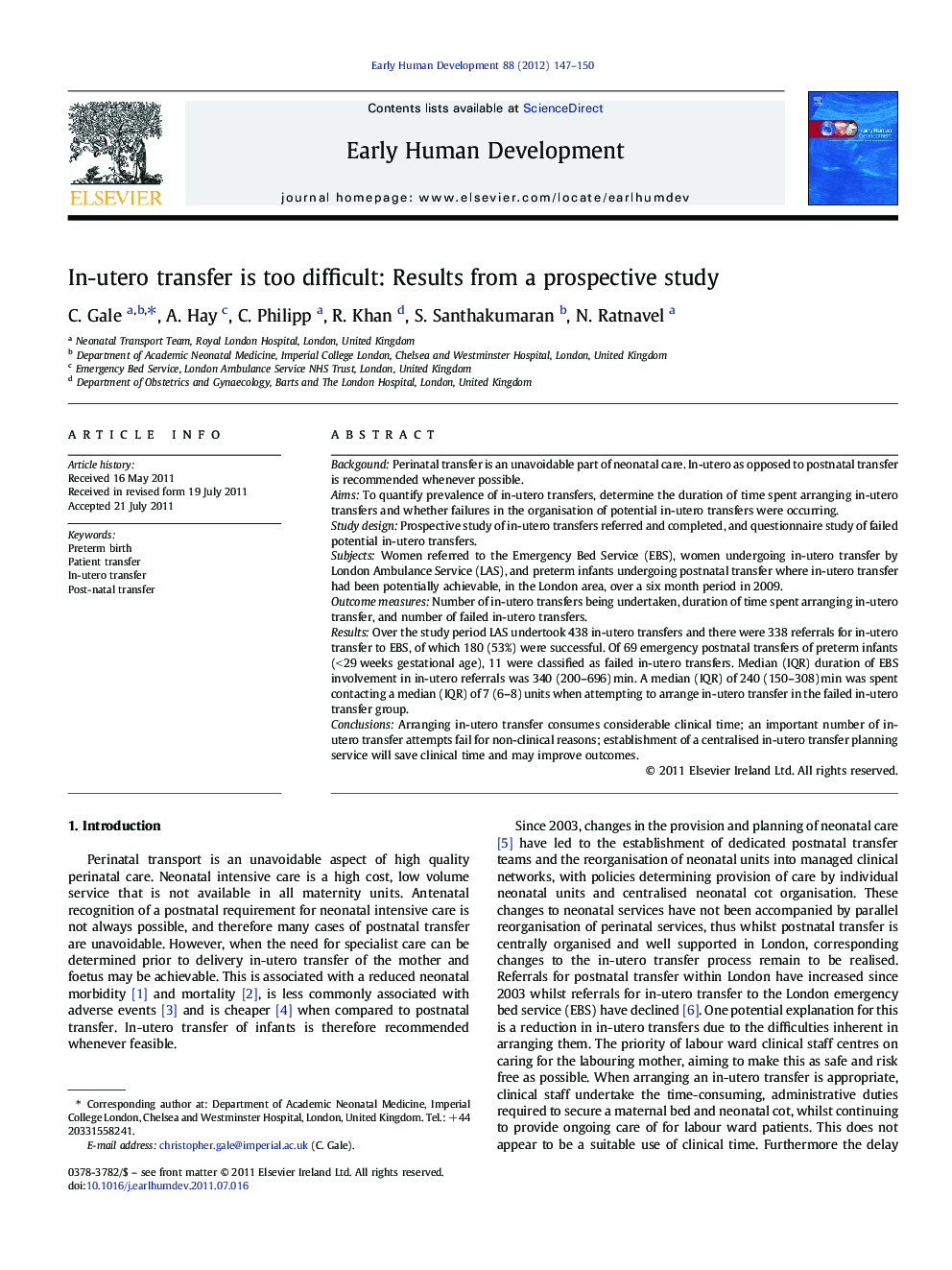| Article ID | Journal | Published Year | Pages | File Type |
|---|---|---|---|---|
| 3918425 | Early Human Development | 2012 | 4 Pages |
BackgoundPerinatal transfer is an unavoidable part of neonatal care. In-utero as opposed to postnatal transfer is recommended whenever possible.AimsTo quantify prevalence of in-utero transfers, determine the duration of time spent arranging in-utero transfers and whether failures in the organisation of potential in-utero transfers were occurring.Study designProspective study of in-utero transfers referred and completed, and questionnaire study of failed potential in-utero transfers.SubjectsWomen referred to the Emergency Bed Service (EBS), women undergoing in-utero transfer by London Ambulance Service (LAS), and preterm infants undergoing postnatal transfer where in-utero transfer had been potentially achievable, in the London area, over a six month period in 2009.Outcome measuresNumber of in-utero transfers being undertaken, duration of time spent arranging in-utero transfer, and number of failed in-utero transfers.ResultsOver the study period LAS undertook 438 in-utero transfers and there were 338 referrals for in-utero transfer to EBS, of which 180 (53%) were successful. Of 69 emergency postnatal transfers of preterm infants (< 29 weeks gestational age), 11 were classified as failed in-utero transfers. Median (IQR) duration of EBS involvement in in-utero referrals was 340 (200–696) min. A median (IQR) of 240 (150–308) min was spent contacting a median (IQR) of 7 (6–8) units when attempting to arrange in-utero transfer in the failed in-utero transfer group.ConclusionsArranging in-utero transfer consumes considerable clinical time; an important number of in-utero transfer attempts fail for non-clinical reasons; establishment of a centralised in-utero transfer planning service will save clinical time and may improve outcomes.
